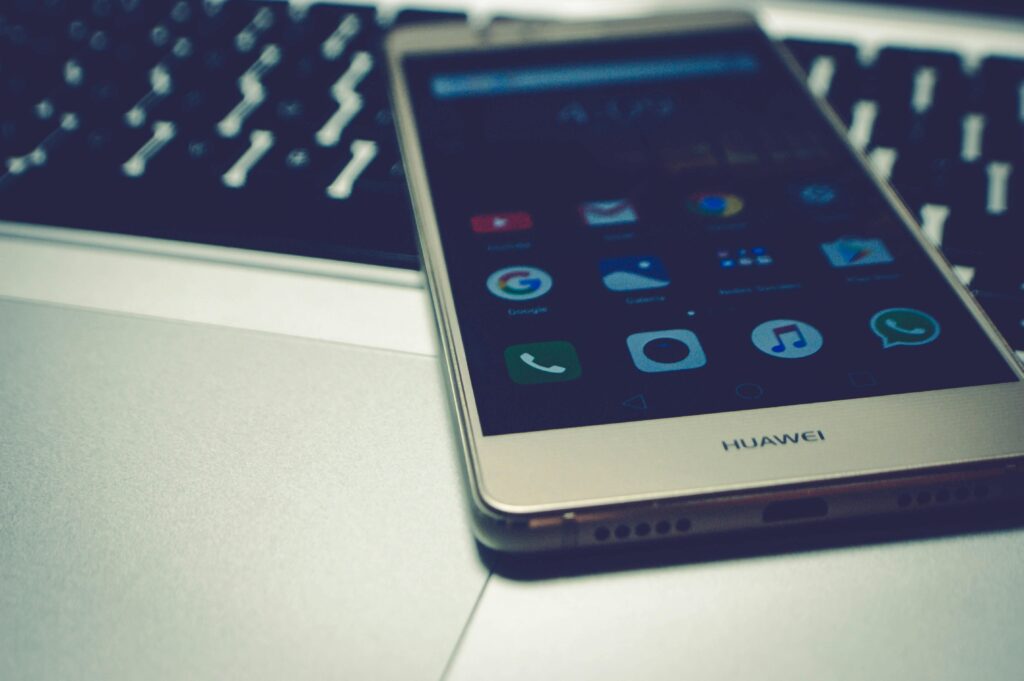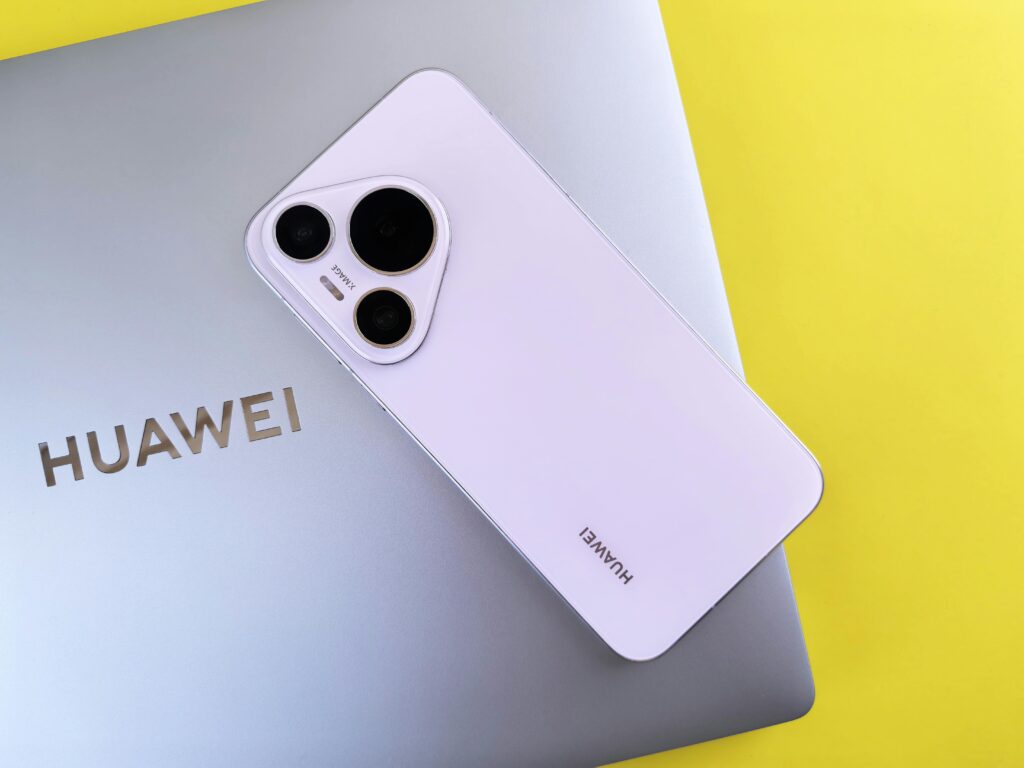Introduction to Huawei Cellphones

Huawei Technologies Co., Ltd. is a Chinese multinational technology company founded in 1987. Initially focused on manufacturing telephone switches, Huawei rapidly diversified, becoming a leader in information and communications technology (ICT) infrastructure. The company entered the consumer electronics market, particularly focusing on smartphones, in the early 2000s. Since then, Huawei has experienced remarkable growth, establishing itself as one of the world’s largest smartphone manufacturers alongside Apple and Samsung.
Huawei’s smartphone division gained significant traction in the late 2010s, driven by innovative technology and a commitment to research and development. The introduction of the Mate and P series revolutionized the marketplace with cutting-edge camera technologies, powerful processors, and long-lasting batteries. The brand has distinguished itself through its emphasis on artificial intelligence integration, particularly within photographic capabilities, where Huawei smartphones leverage advanced algorithms to enhance image quality.
Furthermore, Huawei has continuously invested in developing proprietary technologies, such as its Kirin chipsets and the EMUI interface, which have contributed to its smartphones’ performance and user experience. The P series, for example, is renowned for its exceptional camera features co-engineered with the prestigious Leica brand, positioning it as a top choice for enthusiasts seeking professional-level photography in a compact form. Huawei cellphones have consistently ranked in the higher echelon of consumer electronics, showcasing premium designs, robust build quality, and competitive pricing.
Despite the challenges posed by geopolitical factors, including restrictions placed by the U.S. government limiting its access to certain technologies, Huawei maintains a significant presence in the global smartphone market. The company continues to innovate and adapt, focusing on building a robust ecosystem that encompasses not only smartphones but also wearable devices, laptops, and smart home technologies. This strategic diversification highlights Huawei’s commitment to remaining a major player in the ever-evolving technology landscape.
Key Features of Huawei Cellphones
Huawei cellphones have garnered considerable attention due to their innovative features and impressive performance. Among the most notable attributes is their camera technology. Models such as the Huawei P50 Pro have revolutionized mobile photography with their Leica optics and advanced computational photography capabilities. This smartphone boasts a quad-camera setup, including a 50 MP main lens, an ultra-wide-angle lens, a telephoto lens, and a monochrome sensor, allowing users to capture stunning images in various conditions. The integration of AI technology also enhances photo quality by optimizing settings based on the scene.
Another essential feature of Huawei devices is their battery life. Many of their recent releases are equipped with substantial battery capacities and fast-charging capabilities. For instance, the Huawei Mate 40 Pro is known for its enduring battery performance, often lasting more than a full day even with heavy usage. The device supports 66W wired charging and 50W wireless charging, allowing for swift recharge times, which is particularly convenient for users on the go.

Design aesthetics play a significant role in the appeal of Huawei cellphones as well. The brand is known for its premium materials and sleek designs that are both functional and attractive. The Huawei P series often features a glass back and curved edges, which not only enhances grip but also contributes to an elegant look. Moreover, the color options available tend to be vibrant and unique, such as the eye-catching airy blue gradient that has become a trademark for several models.
In summary, Huawei cellphones distinguish themselves in the marketplace through their cutting-edge camera systems, robust battery life, and appealing design. With models like the P50 Pro and Mate 40 Pro leading the charge, these devices offer a compelling choice for consumers seeking quality and innovation in mobile technology.
Comparative Analysis with Competing Brands
When evaluating the Huawei cellphone series in relation to competing brands such as Apple, Samsung, and Xiaomi, several factors come into play, including performance, price, user experience, and customer satisfaction. Understanding these aspects can provide potential buyers with a comprehensive view of whether Huawei devices are worth their investment.
Starting with performance, Huawei smartphones are known for their robust hardware and sophisticated software integration. The brand has made significant strides in utilizing its Kirin chipset, which delivers impressive processing power and energy efficiency. In comparison, Apple’s A-series chips typically offer top-tier performance, especially in graphics-intensive applications. Samsung’s Exynos and Snapdragon processors also hold their ground, but some users report that Huawei’s devices may have a slight edge in multitasking capabilities, thanks to their RAM management optimizations.
Price is another crucial aspect where Huawei often stands out. Generally, Huawei cellphones tend to be more affordable than their Apple counterparts, making them an attractive option for budget-conscious consumers. While Samsung offers a range of devices across various price points, the flagship models often command premium pricing similar to Apple. Xiaomi frequently undercuts competitors with its budget-friendly offerings, creating a competitive dynamic in this segment.
User experience varies significantly among these brands. Huawei’s EMUI interface, based on Android, has seen considerable enhancements to its usability, catering to a broad audience with customizable options. Apple’s iOS remains a favorite for its seamless integration and consistent updates. Samsung’s One UI has gained popularity for its user-friendly design and feature-rich offerings. Xiaomi’s MIUI, while sometimes criticized for bloatware, provides a high degree of customization. Customer satisfaction is generally high across all these brands, though Huawei’s recent controversies may influence consumer perceptions differently compared to its competitors.
User Experience: Pros and Cons
The user experience of Huawei cellphones has garnered a diverse range of opinions, reflecting a mix of both positive and negative aspects. One of the most frequently praised features among users is the software performance. Huawei devices are typically equipped with their proprietary EMUI operating system, which is based on Android. Many users report smooth navigation and efficiency, contributing to a satisfactory overall experience. Additionally, the integration of Artificial Intelligence (AI) in Huawei’s software has been noted to enhance various functionalities such as photo processing and battery management. Users appreciate this innovation, as it often leads to improved device performance over time.

Another significant advantage reported by users is the camera quality of Huawei smartphones. With advanced camera systems, particularly in flagship models, many users acknowledge the remarkable image clarity, vibrant colors, and impressive low-light performance. Photographers and social media enthusiasts, in particular, have found the camera features to exceed their expectations, often considering them to be on par with those of other leading high-end brands. This focus on camera technology is a decisive factor for many when evaluating whether Huawei cellphones are worth the investment.
However, there are also notable drawbacks that users encounter. A common concern revolves around the availability of services, particularly after the U.S. sanctions that limit Huawei’s access to certain software and applications. Users have reported challenges in accessing popular apps, which may impact their overall satisfaction. Furthermore, the frequency and timeliness of software updates can be inconsistent compared to competitors. Some users express frustration over the difficulty of receiving new features and security enhancements, which can affect their device’s long-term performance. Overall, while Huawei cellphones offer significant strengths, these persistent issues may influence potential buyers’ decisions.
Software and User Interface
Huawei’s operating system has evolved significantly over the years, transitioning from the familiar EMUI to the newer HarmonyOS. EMUI, based on Android, provided users with a tailored experience, offering features such as extensive customization options, various themes, and a fluid interface that encouraged user engagement. However, the significant shift to HarmonyOS marks a new era in Huawei’s approach to mobile operating systems.
HarmonyOS is designed to create a seamless ecosystem across numerous devices, be it smartphones, tablets, or smart home products. This cross-device compatibility enhances the overall user experience, allowing users to connect and manage their devices with ease. One of the standout features of HarmonyOS is its ability to deliver superior performance through optimized resource management, thereby ensuring that applications run smoothly and efficiently even on lower-spec devices. This aspect is pivotal, as efficiency can greatly influence the longevity of a device’s performance.
Usability is at the forefront of Huawei’s software design philosophy. Users benefit from intuitive navigation patterns, which makes accessing applications straightforward. The layout is structured to minimize clutter, ensuring that essential functionalities are easily reachable. Additionally, Huawei promotes accessibility through customizable options, allowing users to tailor their interface according to personal preferences, such as adjusting icon sizes, font styles, and even the overall theme, leading to a more personalized experience.
App availability remains a crucial factor in a smartphone’s attractiveness, and while Huawei has made strides in enriching their app ecosystem through the AppGallery, some users may find it lacking in comparison to the Google Play Store. Nonetheless, ongoing efforts to bolster partnerships with developers and facilitate app migration continue to enhance the offerings available to users.
Pricing and Value for Money
When considering the Huawei cellphone series, an important aspect to examine is the pricing strategy employed by the company and how it compares to its competitors. Huawei offers a diverse range of smartphones that cater to various market segments, from budget-friendly devices to high-end flagship models. This segmented approach allows customers to find a suitable device that meets their specific needs and budget constraints.
In the budget tier, Huawei provides cost-effective options without compromising essential features. These smartphones often come with impressive specifications such as decent camera systems, long-lasting batteries, and solid performance metrics that rival those of similarly priced devices from other brands. This has established Huawei as a strong contender in the lower price range, highlighting their commitment to providing good value for money.
As customers ascend the pricing tiers, Huawei maintains a competitive edge by incorporating advanced technology and premium features into their mid-range and flagship models. For instance, devices in their P and Mate series are recognized for cutting-edge photography capabilities and innovative designs. Despite being positioned at a higher price point, many users find the investment worthwhile, as it embodies the seamless integration of hardware and software that enhances user experience.

Additionally, brand reputation plays a crucial role in perceived value. Huawei’s commitment to quality, reliability, and customer service bolsters confidence among consumers, making the price of their cellphones appear more justified. By offering various models at different price points, Huawei effectively attracts a wide demographic, ensuring that potential buyers can find a device that aligns with their financial means while delivering significant value compared to competitors.
Future of Huawei in the Smartphone Market
The future of Huawei in the smartphone market is shaped by a multitude of factors, including geopolitical influences and increasing competition. Since the U.S. government imposed trade restrictions on Huawei, the company’s ability to access essential technologies, such as Google Mobile Services (GMS), has been severely impacted. As a result, Huawei has had to pivot towards developing its own operating system, HarmonyOS, which aims to reduce the company’s reliance on external software ecosystems. The long-term success of this transition remains uncertain, yet it illustrates Huawei’s commitment to innovation in the face of adversity.
In addition to software development, Huawei is also focusing on hardware innovation. The company continues to invest in R&D to enhance its camera technology, AI capabilities, and battery performance. These advancements are crucial as they differentiate Huawei products from competing brands, which have also adopted aggressive strategies to capture market share. As consumer preferences evolve, particularly towards premium models, Huawei’s ability to deliver cutting-edge specifications at competitive prices could be a deciding factor in regaining market prominence.
Moreover, Huawei is anticipated to explore strategic partnerships and collaborations to overcome current challenges and expand its global reach. For instance, initiatives to strengthen alliances with local manufacturers in various regions could enhance market penetration and facilitate access to new customer bases. Furthermore, the company’s focus on emerging markets offers significant growth potential, as these areas often show increased demand for budget-friendly smartphones equipped with robust capabilities.
In conclusion, while Huawei faces considerable hurdles in its quest to reestablish itself in the smartphone market, its emphasis on innovation, strategic partnerships, and adaptation to consumer demands may determine its trajectory. As the smartphone landscape continues to evolve, Huawei’s agility and response to external pressures will play a crucial role in shaping its future.
Customer Support and Warranty Services
Huawei has made significant strides in enhancing its reputation for customer support and warranty services, which are critical considerations for potential buyers. When investing in a smartphone, consumers often prioritize the quality of after-sales service, and Huawei aims to meet these expectations through various initiatives. The company’s warranty policy generally offers a one-year coverage period for defects in materials and workmanship, which is standard in the smartphone industry. However, Huawei differentiates itself by providing options for extended warranty coverage in certain markets, granting users the flexibility to prolong their device protection.
One of the key factors in evaluating Huawei’s customer support is the efficiency of its service centers, which have been established in many regions worldwide. Customers report that the repair process is relatively smooth, with a typical turnaround time for repairs being shorter than that of some competitors. Additionally, Huawei has implemented online support platforms, which enable users to troubleshoot issues or seek assistance without needing to visit a physical location. This online presence not only enhances customer experience but also demonstrates Huawei’s commitment to customer satisfaction.
When comparing Huawei’s warranty and service to other brands, it is essential to note that customer service reputations can vary widely based on geographical locations. In regions where Huawei has a strong market presence, users often express satisfaction with the support they receive. However, there are still areas where the service may lag behind more established brands, underscoring the need for continued improvements in certain regions. Overall, while Huawei offers competitive warranty services and commendable customer support, potential buyers should assess these factors based on their regional experiences and specific needs. As the company continues to evolve, enhancing its customer service can further solidify its standing within the competitive smartphone landscape.
Conclusion: Should You Choose Huawei?
As we have explored throughout this discussion, the decision to invest in a Huawei cellphone rests upon a multifaceted evaluation of both its strengths and weaknesses. Huawei has established itself as a major player in the smartphone industry, known for producing devices that combine advanced technology with competitive pricing. Their smartphones are recognized for robust camera systems, powerful battery performance, and attractive designs, catering to a variety of user needs.
However, purchasing a Huawei cellphone is not without its challenges. The ongoing geopolitical tensions and the associated restrictions on software updates, especially regarding Google services, can be significant concerns for many potential buyers. While Huawei has made strides in developing its own ecosystem with HarmonyOS and a suite of proprietary apps, users accustomed to the Google experience may find the transition less than ideal. Furthermore, with the competitive landscape of the smartphone market continually evolving, prospective customers must weigh these factors against what rivals offer in terms of features, accessibility, and support.
Ultimately, whether a Huawei cellphone is a smart choice depends on individual preferences and requirements. For those who prioritize cutting-edge technology, innovative features, and strong performance at a reasonable price, Huawei smartphones might present a compelling option. Conversely, for users who rely heavily on Google applications and seek a familiar interface, exploring alternatives from other manufacturers may be advisable.
In conclusion, it is crucial for potential buyers to critically assess their needs, preferences, and the implications of choosing a Huawei cellphone. By doing so, they can make a well-informed decision that aligns with their lifestyle and technology expectations.




